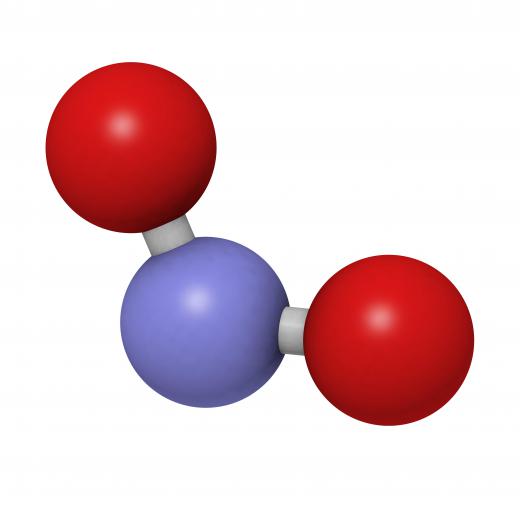Ethyl alcohol, or ethanol, is a form of alcohol that is used as a fuel or a fuel additive. It is often talked about as being an environmentally friendly alternative to petroleum-based products like gasoline. The reason it is considered greener is due to ethanol’s emissions when compared to those of petroleum-based fuels. Ethanol emissions are generally less poisonous than gasoline emissions, especially when the alcohol is used in its purest form.
Ethanol emissions during combustion are considered to be environmentally friendly. This means that, when ethyl alcohol is used as fuel, the resulting waste products do not significantly damage the environment. Ethanol used for combustion results in the production of carbon dioxide and water. Water is a beneficial substance necessary for life. Carbon dioxide is a commonly occurring gas, and is exhaled by animals during respiration. It should be noted that carbon dioxide is considered a greenhouse gas, meaning that large amounts of it entering the atmosphere could result in global warming. Because petroleum-based fuel emissions are both more toxic and also contain carbon dioxide, the possible environmental impacts from ethanol combustion are often ignored.

Chemically, ethanol emissions from combustion are very easy to understand. Ethyl alcohol has the molecular formula of C2H5OH. It reacts with a small amount of energy and six oxygen molecules (3O2) to produce heat (energy), two carbon dioxide molecules (2CO2), and 3 water molecules (3H2O).
Ethanol emissions are not limited to fuel combustion - they can also include ethanol production. Ethyl alcohol is primarily produced through fermentation. During the anaerobic stage of fermentation, yeast metabolizes sugar and produces ethyl alcohol and carbon dioxide. Chemically, the yeast turns sugar (C6H12O6) into two ethanol molecules (2C2H5OH) and 2 carbon dioxide molecules (2CO2) after various reactions. Some organizations also include the emissions given off by farm equipment used to harvest the crops involved in fermentation, though these can vary depending on what machinery is used.

Ethyl alcohol can also change the emissions of petroleum fuels when used as an additive. Gasoline mixed with ethanol is called blended fuel. Blended fuel is common in the United States, where it is routinely sold in 10% to 15% ethanol mixes. The ethanol acts as an oxygenate, decreasing many dangerous gasoline combustion emissions such as carbon monoxide. Blended fuels, however, have been found to have slightly increased levels of nitrogen oxides and aldehydes in their emissions. These slightly increased levels are considered far less dangerous than the levels of toxins in non-blended fuels, however.
